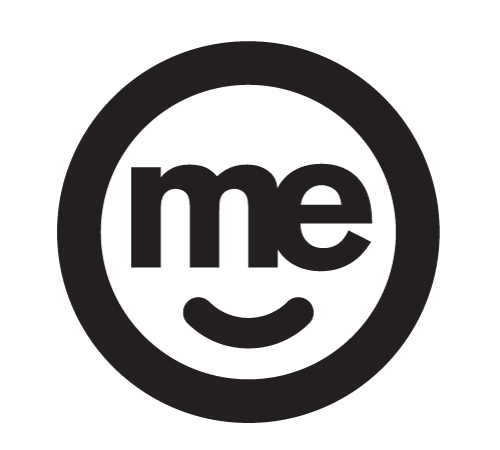Some lenders can lend you up to 95% of the property value subject to eligibility.
How much you can afford to borrow will depend on a range of factors such as your income (e.g. how much do you earn, whether it is Australian or overseas sourced, etc.), your credit history (whether you have had previous home loan defaults, overdue utility bills, etc.), your savings/deposit, and the value of the home you’re interested in buying. Most lenders would love to see, for a period of time, proof of your genuine saving capacity, i.e. you earn more than you spend.
Lenders check your financial situation against their own lending policies and these lending policies can vary significantly, e.g. how much is your foreign income discounted, if accepted at all, in the lenders’ serviceability calculation.
This is why you need to contact us, as we are able to analyse your scenario and provide you with useful and accurate information for each lender.
A typical home loan generally requires a deposit of at least 5% of the property’s value plus additional funds to complete the transaction, and the additional funds generally cover typical fees and charges such as stamp duty, legal fees and other transactional fees.
In addition, the Lenders Mortgage Insurance (LMI) is generally payable by the borrowers if the deposit is less than 20% of the property value. However, some lenders will agree for the LMI to be capitalised and included in the final loan amount, boosting the actually loan amount up to 97% of the value of the property, and reducing the initial funds required to complete the transaction quite significantly.
So contact us now to find how much deposit you need to afford the property you are interested in.
The FHOG is a one-off grant that is payable to first home owners that satisfy all the eligibility criteria.
To be eligible for the first home owners’ grant you and your spouse should not have previously owned a home or claimed the grant. For more details please visit www.firsthome.gov.au
A quick eligibility check for Queensland state:
- You are at least 18 years of age
- You’re an Australian citizen or permanent resident (or you’re applying with someone who is)
- You or your spouse has not previously owned property in Australia
- You’re building or buying a new home
- The value of the home is under $750,000
As part of our loan application process, we will help you with applying for the FHOG.
When you buy or sell a home there are several government fees and charges that will apply, and they vary from state to state.
If you are a first home owner, you may be eligible for stamp duty concessions. You can find the stamp duty calculator and concession information at:
http://stampduty.calculatorsaustralia.com.au/
https://www.osr.qld.gov.au/duties/transfer-duty/exemptions-and-concessions/concessions-for-homes.shtml
Or simply contact us, and we will do this boring stuff for you, while you are out there house hunting!
Lender’s Mortgage Insurance protects lenders against loss in the event that you default on the loan. In the case of a loan foreclosure, if the property is subsequently sold at a price that does not cover the loan in full, this insurance will cover the debt owed to the lenders.
There are a number of variables that influence whether you’ll need Lender’s Mortgage Insurance and it is not necessary in all circumstances.
Generally it is payable by you if you are borrowing more than 80% value of the property, and the premium varies depending on the property type, location, type of the loan and lenders. Some lenders may allow you to capitalise the LMI premiums to form part of the final loan amount, which means lower initial capital required to complete the purchase.
Contact us now for more information regarding when and how the LMI kicks in in a property purchase.
Both redraw facility and offset account are great loan product features that offer flexibility in accessing the additional funds you have repaid over the minimum amounts. The whole idea is that you put away your savings into your home loan with redraw facility or the offset account so you save on interest charges on your home loan (with no tax payable on the interest saved), with the ease of taking the funds out if you need them later on.
A home loan with redraw facility shows the loan balance less any additional funds you put in on top of the required payments, where as a home loan offset account is a separate savings account linked to your loan. The balance in the savings account is offset against the amount owing on the home loan when interest is calculated.
100% Offset may also be a tax effective arrangement because you do not earn any interest on the amount in your “linked” deposit account which would normally have been treated as income and subject to taxation at your normal marginal rate.
Lenders have different policies regarding their loan products with redraw facility and offset account, and we will tell you all about them during our product selection process.
As your life, as well as the market changes, you may need to review your mortgages every few years just to stay ahead of the game. Always knowing what your needs are, what your existing mortgages can do, and what other products on the market can offer, and taking action when the time comes, can often make a big difference and saves you heaps.
These are some “timely” reasons we put together for you to consider whether it is your time to take the action and refinance your mortgage:
- Time to renovate or put an extension to your home?
- Time to go for a lower interest rate/fees/monthly repayments and save money?
- Time for a change because you are having a baby, finishing up at your job, or selling/buying an investment property?
- Time to have more certainty and fix the interest rate and repayment for a couple of years?
- Time to stop the madness of having 10 credit cards and personal loans and consolidate into one manageable loan?
If you think it is the time for you, we are here to help!
Refinancing your home loan can save you lots, however, there may be some upfront costs you need to budget for. We can help you weigh up the short term pain and the long term gain so you know how much you will benefit from it. The following are some of the fees:
- Exit fees from the existing loan;
- Establishment or application fees for new loan;
- Loan approval fees for new loan;
- Settlement fees for new loan;
- Additional mortgage stamp duty if you increase your current home loan;
- Mortgage registration fees for new loan;
Lenders often have promotions in the forms of cash rebate, waiving establishment fee, etc. to help with your refinance. When we discuss with you your refinance options, we will be aiming for maximising your long term gains at the lowest price that you have to pay upfront. In most cases, you start to save money from the first couple months after refinancing.
NRAS properties could be a good investment type for your portfolio, depending on your personal circumstances. Nevertheless, most lenders are taking a conservative approach, and have strict lending policies for them. Unfortunately, a detailed answer will not fit in the FAQ section. So call us, and discuss how you can borrow up to 90% for NRAS properties.
Applying for a commercial loan is different from a residential one, simply because the lenders perceive higher risks involved. The lenders generally assess the application on a case-by-case basis, and the sad reality is that 1 in 4 commercial loan applications gets rejected.
In order to successfully get a commercial loan, you need someone who understands business and risks, and can help you present your loan application in a way that maximises your chances. With our strong accounting and finance background, we can certainly help.
We will have discussion with you regarding your business operations and your personal circumstances, and identify all viable options. We will then spell out the pros and cons with each option to work out the right loan structure for your business. We strive, to get you that deal!
Check out our easy three-step CMA process at XXXXXXX
This is a tricky question, and we think what you meant was “what is the best DEAL I can get?”
The lenders have certainly done a great job in making the market think that the lowest interest rates equals the lowest costs, and therefore the best product, and they try very hard to advertise to you that they have got the lowest interest rates.
It’s important to remember that when it comes to saving money on your home loan, it is much more than the advertised interest rates. Other costs such as loan application fee and monthly account fees, and limitations on features, for example, redraw charges and offset account limit, and much more, are all playing a big part in the total loan costs.
The comparison rate could be used cautiously as a starting point, and we do mean CAUTIOUSLY, as its calculation is based on some simplistic assumptions, which do not always reflect the true implications for your situation.
Call us today, and we will help you see the wood for the trees, and find you the best DEAL.
Yes you can!
Being a small business owner can be challenging, and that is why we are here to help. We will get to understand your business operations and adopt a “big picture” approach for establishing your serviceability, that is, adding back certain expenses to your profitability to increase your borrowing capacity.
On top of normal home loan options, some lenders offer Low Documentation Home Loan (Low Doc) for self-employed customers and small business owners.
So contact us to find out if we can help you today!
LENDING SOLUTIONS THROUGH PARTNERSHIP
NEED AN EXPERT ON YOUR SIDE?
If you’ve had enough of the financial run-around and you want to see real results that are based on your goals, then get in touch with us today. We’ll be with you all the way.



























